The LG V20 isn’t just one of the biggest smartphones you’ll soon be able to buy, it’s also one of the most feature packed. Coming out of the box with LG’s brand new UX 5.0+ software, the phone is packed to the brim with extra features on top of Android 6.0 Nougat. So many, in fact, it may prove challenging to find the ones you should be keeping an eye out for. Don’t worry, we’re here to help. Here are 30+ of our favorite tips and tricks for the LG V20.
How to take a screenshot on the LG V20
The LG V20 is different from most other Android devices in that the fingerprint sensor on the back actually doubles as the power button. That means, taking something like a screen shot using the normal “power button + volume down” combo can be a little tricky. Okay, it’s downright frustrating.
Thankfully, taking a screen shot on the LG V20 can also be quickly accessed in your device’s notification panel (look for the Capture+ button), which can also be moved around by clicking the edit button.
Lastly, you can add a Capture+ button to your Second Screen by going into Settings > Second screen > Show when main screen on > Quick Tools. From there, you can tap an icon to replace with Capture+, or long press to rearrange.
Use Quick Charge 3.0 chargers for the fastest charging
The LG V20 is one of a few Android devices that features Qualcomm’s new Quick Charge 3.0 technology. Although you can can still (safely) use a wall charger from any other smartphone, to get the full benefit of Quick Charge 3.0 charging speeds from the V20, you’ll want to stick with the supplied charger that came in the box.
The good news is that Quick Charge 3.0 is backwards compatible and although a Quick Charge 2.0 adapter may not charge the phone as quickly as the supplied charger, it’s better than most other non-QC (regular) chargers. If you’re looking for either a replacement or spare charger, here are a few reliable Quick Charge 3.0 adapters on Amazon:
- AUKEY Quick Charge 3.0 wall adapter: (Single port) $14 | (Double ports) $20
- AUKEY Quick Charge 3.0 car charger (Dual port) $20
- AUKEY Quick Charge 3.0 USB hub (6 ports) $35
Pop in a micro SD card
The LG V20’s 64GB of internal storage should provide most folks with enough room to store their the apps, games, and media. But since the V20 also allows users to shoot in high-quality 4K (with HiFi Audio to boot), you may find it beneficial to expand this storage with a micro SD card. Especially if you plan on shooting a lot of video.
Adding an SD card is easy. Just remove the back cover from the V20 by pressing the unlock button on the side and slide a micro SD card (up to 2TB) into the slot. Unlike the SIM card tray, you don’t even have to remove the battery to insert/remove an SD card, so you can use it to transfer media quickly and easily should you choose.
When it comes to removing the SD card, make sure you eject it first by going into Settings > Storage > and tapping on the eject icon next to the SD card. After that, you can physically remove the SD card safely.
Customize the Second Screen to make it truly useful
Although some would label the Second Screen on the LG V20 a gimmick, it’s actually pretty darn handy once you set it up. There’s a ton of options here and while having a signature display your name all the time might be fun for some folks, it doesn’t really add much utility to the Second Screen.
Instead, we found that adding our most commonly used apps, media controls, and settings toggles (Quick Tools), was the perfect way to take advantage of the Second Display. Here’s where you’ll find it.
- Open the Settings app
- Tap on Second screen
From here, you’ll find 2 main options (Show when main screen on and off). Tapping on the words — not the toggle switch — will pull up additional options for the following:
- Show when main screen on – Choose additional content to show on the Second Screen from contacts, to upcoming plans, or recent apps. You can rearrange the order by using the handles on the left.
- Shown when main screen off – Choose whether to show the Date & time or your signature when the main screen is off. You can also choose which Quick Tools (settings toggles) to show as well by tapping on them or long pressing to change their placement. There’s even the option to set the Second Screen to turn off automatically on their own.
Customize the quick settings in your notification panel
Android’s quick settings (toggles) are easily one of its most useful features. You can further add to their convenience by customizing and reorganizing them to better suit your needs.
Just pull down the notification shade, then once more to expand the settings toggles. It’s then you’ll find the option to edit the notification panel, remove, add, or just rearrange your current toggles however you like. Don’t forget there’s 2 pages of toggles, so swipe over to the right to see the rest.
LG’s UX 5.0+ interface adds a few extra options as well. Tapping the 3-dot menu will allow you to add additional sliders for brightness and volume, or new buttons for screen and file sharing (although admittedly, we turn those off).
Customize your Home screen
The LG V20’s built-in Home screen allows you to customize it in a variety of different ways. Found in Settings > Home screen, there are 4 main options:
- Smart Bulletin – This is like LG’s version of Google Now which is a home screen page dedicated to Calendar, LG Health, QuickRemote, Evernote, Smart settings, and Music.
- Wallpaper – This is where you can change the wallpaper on your Home screen.
- Screen swipe effect – The transition effect you see when swiping through your Home screen pages.
- Allow Home screen looping – Jump back to the first Home screen page after swiping past the last.
Don’t forget that you could always download a 3rd party launcher (Home screen) from the Google Play Store. Just remember to enable it, you’ll have to visit the same Home screen page in your Settings app to choose it.
Set up your “Do not disturb” schedule
Nobody likes being woken up by a random email or instant message in the middle of the night. Although you could manually silence your phone before bed, it’s just one more thing you have to remember doing before turning in for the night. Nobody wants that.
The nice part about having a smartphone is it can perform specific functions automatically — like mute your smartphone during set “do not disturb” times. Oh, and so you don’t have to worry about missing an emergency call or text message, you can still allow phone calls from specific phone numbers or certain instances (like multiple phone calls from the same number). This can all be configured in the following settings:
- Open the Settings app
- Select Notifications
- Tap on Do not disturb
From here, you have a variety of options to customize do not disturb to your liking. Like allowing calls based on a specific criteria (anyone in your contacts for instance), or just allowing calls from anyone who calls repeatedly within 15 minutes (this could be helpful if someone’s in trouble and has to use a stranger’s phone).
- Select priorities – Calls from: no one, everyone, contacts, favorites.
- Repeated calls – Second call from the same caller within 15 min is not silenced.
- Messages from: No one, everyone, contacts, favorites.
- Schedule – Set a weekly schedule for turning on Do not disturb. Available options include by day, time, priority only or total silence.
Power saving modes (game battery saver)
Most devices these days feature some sort of built-in power saving function. The LG V20 is no different, but trumps a lot of other devices in that it offers a little more than the usual power saving settings (disabling background data, CPU usage, dimming the display, etc..) with an additional setting called Game battery saver.
The game battery saver allows you to pick specific games to tone down graphical quality (frame rate or resolution) to make things easier on your processor/GPU. By messing with these settings, the V20’s graphics processor doesn’t have to work as hard, saving you precious battery as a result. It’s pretty straight forward and handy for games where graphics performance isn’t really all that important (Pokémon GO for instance).
- Open the Settings app
- Scroll down and select Battery & power saving
- Tap on Game battery saver (the words, not the toggle switch)
- Choose desired optimization level
Customize your navigation buttons and color
Like most other manufacturers, LG likes to theme up Android with their own custom UI. The result are strange UI choices, like changing the normally black navigation bar (where you find the on-screen buttons) by making the background stark white. It’s odd and quite frankly a little too bright when using the phone in darker lighting situations. The good new is you can change this back to black easily, just as the good Lord intended. Here’s how:
- Open the Settings app
- Scroll down the select Display
- Tap on Home touch buttons
From here, you have 3 different options that include:
- Choose different button combinations, or add new ones
- Change the nav bar color (white or black)
- Hide Home touch buttons for specific apps/games
KnockON and Knock Code
KnockON is one of LG’s better known features and one they’ve been adding to their devices for years now. That doesn’t mean it’s any less noteworthy. The feature allows you to wake the device from sleep simply by double tapping on the display, or use a secret combination of taps on different quadrants on the display to unlock.
While KnockOn should already be enabled by default, if you find the feature getting in the way (activating when it’s not supposed to), it’s probably best to just turn it off via Settings > Display > KnockON. As for the the Knock Code feature — locking your device down by using a combination of well-placed taps — you can find that here:
- Open the Settings app
- Scroll down and select Lock screen
- Tap on Screen lock
- (Confirm password if you have one)
- Select Knock Code from the list of available screen locks
- Follow onscreen directions on setting it up
Apply a dark theme
As part of LG’s new UX 5.0+ custom Android user interface, they’re finally allowing users to customize the look of their device using full system wide themes. They’re available in LG’s special Theme store app and change the look of everything from the notification panel to the icons and settings toggles.
Right now there aren’t too many of them available (2 built-in, and 1 to download), but we’re sure the number will grow over time. Even then there’s a pretty nice dark theme you can try right now. Just hop into Settings > Theme to get started.
Change the display size for more screen real estate (or poor vision)
The display on the LG V20 is incredible large. One of the first things we noticed when powering the device on for the first time was how blown up the UI appeared. Icons were ginormous, text was huge — it was a little much for our tastes, especially considering the size of the display.
Whether you have good eyes and want to take advantage of that extra screen real estate to show more of everything, or you want to further enlarge text, icons, everything — it’s all possible thanks to a new feature in Android 7.0 Nougat. Here’s where you’ll find it:
- Open the Settings app
- Tap on Display
- Scroll down and select Display size
- Move the slider to the left or right to either shrink, or blow up the entire UI
Activate Mini mode for easy one-hand use
The LG V20’s 5.7-inch display might be a lot for some folks to handle. Although it’s easy to simply use two hands to reach everything on the screen, should there come a time when only one is free, you’ll need to take advantage of Mini mode. This shortcut shrinks the screen to a fraction of its size so that everything is easily reachable with one hand.
To activate it, all you have to do is swipe the navigation bar shrink it down to the left or right corner. After that, the window can be dragged around, or enlarged by grabbing the upper left corner. Should you decide this feature isn’t for you (I’ve activated it on accident more than a few times), you can always disable it in Settings > Display > Mini view.
Give your home screen an app drawer (or choose something else)
Whether you’re looking to change your home screen to one with an app drawer, or try one of the many 3rd party apps available on the Google Play Store, this can all be done from inside the Settings app.
- Open the Settings app
- Tap on Home screen
- Select Home
- Choose between Home, EasyHome, Home & app drawer, or any other 3rd party home screen app you already have installed.
Night mode (comfort view)
After recent studies have shown that the using your smartphone at night can keep you from falling asleep quickly, blue-light filters have become the latest buzzy smartphone feature. Depending on the phone, they go by different names but they all do the same thing: filter out blue light on your phone’s display to create a warmer image (similar to indoor lighting or candle light).
On the LG V20, it’s called “Comfort view” and you can actually adjust the intensity of the effect. Here’s where you’ll find Comfort view:
- Open the Settings app
- Tap on Comfort view (text, not the switch)
- Choose desired intensity level (will need to activate the switch first)
Unfortunately, there’s no way to schedule set Comfort view times, but the toggle can be found in your notification panel to easy on/off. Keep in mind you can rearrange the placement of the quick settings by clicking the EDIT button and long pressing them to drag them around.
Multi-window mode
For multi-taskers who hate being limited to using one app at a time, the LG V20 is one of the few devices that allows you to open 2 separate apps side-by-side for simultaneous usage. It’s called Multi-window mode and it’s built into Android 7.0 Nougat. Thankfully, that just so happens to be what the LG V20 is running and enabling it is easy.
- Press the recents button
- Tap the double rectangle button at the top of an app preview window (this will set the app to the top window)
- On the bottom half of the screen, pick another recently used app to open another window
Things you can do:
- Press the home button to select another app (bottom window)
- Drag the slider in the middle to shrink/extend the top window
- Dragging the slider all the way down will exit multi-window mode
The problem with multi-window mode is not very many apps support it at the moment. In fact, it seems some of our favorites — Pokémon GO, for instance — are DOA. Don’t worry, there’s actually a way you can force compatibility with the new feature, all you have to do is dive into Android’s secret Developer options. Here’s how:
- Open the Settings app
- Scroll down and select About phone
- Tap Software info
- Scroll down and tap Build Number 7 times
- “You are now a developer” message will appear
- Go back into the main settings and you’ll see a new option: Developer options
Then…
- Open Developer options
- Scroll down and select Force activities to be resizable
- Reboot
Now you’ll be able to open any and all apps in multi-window mode. Well, unless they force close on you. You’re welcome.
Google In Apps
The LG V20 is one of the first Android devices to feature Google In Apps. This is basically a feature that allows you to perform personal searches, pulling up info from inside your apps. For instance, you could search for a friend’s name and pull up a message they recently sent you, email, Keep note you’re sharing, Instagram profile, or loads of other info stored inside your phone — from inside your apps.
To get started, you can either perform a normal Google Search and once the results are displayed, scroll over to the In Apps tab at the top. That, or you can open the shortcut using the In Apps icon in your app drawer (much easier). Keep in mind that not every app is compatible with Google In Apps, but Google says they’re working on adding more.
Since personal results happen entirely on your device, you don’t even need an internet connection for it to work and can customize which apps to pull info from via your Google settings. Here’s how:
- Open the Google app
- At the top left, tap Menu followed by > Settings > In Apps
- Check/uncheck an app to add/remove from search results
Camera Tips & Tricks
The LG V20 features some pretty fancy camera tech. With a dual lens system, users can switch between the regular 16MP camera or a super wide angle 8MP on the fly. The weird part is when you first open the camera app, that primary 16MP camera is actually cropped to 12MP, giving you the appearance of a wider 16:9 aspect ratio. Don’t be fooled.
While it’s nice to see the viewfinder filling up the entire display, it’s basically chopping off the top and bottom. Why is LG forcing this on their users? Who knows, but you can get back all 16 megapixels by jumping into the camera settings and making one small change. Here’s how:
- Open the Camera app
- Tap on the camera settings (gear icon)
- Select Photo size > 4:3 (16MP)
Use the primary 16MP camera whenever possible
Also something to keep in mind that, while the secondary wide-angle lens can be fun to use, the quality is noticeably worse than the regular 16MP camera. Our advice is to use it sparingly and only in extremely well-lit environments like the outdoors where there’s plenty of light. Other than that, stick to the 16MP camera if possible.
Enable HDR mode and leave it on
HDR mode doesn’t have a quick access toggle, but we strongly recommend going into the camera settings and enabling it as it greatly improves the bright and dark areas of your photos. When it’s turned on, there’s a very slight delay when snapping photos, so it’s not well-suited for fast moving subjects. That means if you’re shooting the kids’ soccer game or the family pet running around the living room, turn it off (just don’t forget to turn it back on later).
Take a photo using your voice
You can also snap photos on the LG V20 by using your voice. Just enable the “Cheese shutter” and while the camera app is open, say “cheese,” “smile,” “whiskey,” “kimchi,” or “LG,” to take a pic without using your hands (extremely useful for taking selfies.
The LG V20 has a variety of shooting modes that include:
- Auto – Standard shooting mode
- Panorama – Stitch together a large panoramic photo
- Slo-mo – Slow motion video (120fps 720p)
- Popout – Use both 16MP/8MP cameras at the same time
- Time-lapse – Record video for fast forward playback (opposite of slo-mo)
- Multi-view – Take a photo collage using all 3 cameras on the phone at the same time
- Snap – Stitches together multiple video clips (tap to record 3 second video, or touch and hold for up to 60 seconds)
Use the fingerprint sensor for more than the lock screen
The fingerprint sensor on the LG V20 is more than just a quick and easy way to keep your lock screen secure. You can also use the fingerprint sensor to make secured purchases via the Google Play Store, or even to lock down media in your Gallery or QuickMemo+.
Whether you’re looking to register additional fingerprints on your device, or toggle Screen lock and Content lock functions, you can find them in Settings > Fingerprints & security > Fingerprints.
To set up Content lock with different back up password or pattern (one different from your lock screen), you’ll find those options in Settings > Fingerprints & security > Content lock > Set lock.
Because nobody likes typing their long (at least it should be really long) Google password every time they want to download a 99 cent app or game, you can also use your fingerprint to authorize purchases. Just open the Google Play app and use the slide out menu on the left to select Settings. From there, select Fingerprint authentication, enter your Google password (hopefully for the last time), and from here on out you can simply use your fingerprint to make all your purchases on Google Play.
Keep guests locked to a single app using Screen Pin
Your smartphone is full of sensitive information. So what happens when someone needs to use your phone to make a quick phone call or look something up online? You can either hand over your phone and stress out, or you rest easy by taking advantage of a core Android feature called Screen Pinning. It basically allows you to lock someone down to a specific app of your choosing, but first, you’ll have to enable it:
- Open the Settings app
- Select Fingerprints & security
- Scroll down and select Screen pin
- Turn it on by tapping on the toggle
- Also turn on “Pin with screen lock“
Once it’s been enabled, you’ll now be able to activate this feature whenever you need to by doing the following:
- Open the app (screen) you’d like to “pin”
- Use the overview button to open Recent apps
- Tap on the pushpin icon at the bottom right corner of the app preview
- Confirm “Pin this screen to only use this app?” by tapping PIN
- “Screen is pinned” message will confirm the app has been locked
- To unpin the screen/app, touch and hold back button until you’re taken back to the lock screen
- Unlock your phone as normal to get back to your home screen
Keep your phone unlocked when it’s safely with you
Smart Lock is a core Android feature that allows you to keep your device unlocked when it’s safe with you. How does your phone know this? Well, you can set it to remain unlocked when it detects movement from your body, when you’re in proximity of your home, connected to the Bluetooth stereo in your car, or your smartwatch. Located inside Settings app > Lock screen > Smart Lock (confirm password), you’ll find the following options:
- On-body detection: Set up device to stay unlocked while it’s on you
- Trusted places: Add location where device should be unlocked (your home, for instance)
- Trusted devices: Add device to keep this one unlocked when it’s nearby
- Trusted face: Set up facial recognition
- Trusted voice: Set up voice recognition
Note: No matter which Smart Lock option you choose, if you don’t use your phone for 4 hours (or happen to reboot), you’ll still have to manually unlock the phone again with your fingerprint, password, or pattern.
Add app shortcuts to the lock screen change the unlock animation
If you’ve secured your lock screen with a fingerprint, you probably wont see it very often since as soon as you press the power button, it will verify your fingerprint and unlock your device. But should you find yourself taking advantage of Smart Lock (which keeps your phone unlocked when at home or connected to a trusted device), you can customize the lock screen in a variety of different ways by going into Settings > Lock screen.
From there you’ll find the option to change the wallpaper, unlocking animation (Screen swipe effect), or even the shortcuts to apps that appear on the lock screen. We’d highly recommend adding Contact info for lost phone in case your phone ever goes missing and is found by someone. This way they’ll know how to contact you or a loved one.
Lock or hide “sensitive” photos or videos with Content Lock
When it comes to keeping prying eyes out of your phone, having a secure lock screen is great way to keep people out. But should you require an additional layer of security (perhaps your household has a no-lock policy), you can hide sensitive memo’s, photos, or videos using LG’s Content Lock feature. Here’s where you’ll find it:
- Open the Settings app
- Select Fingerprints & security
- Tap on Content Lock
From here, you’ll have the option of setting up a different password or pattern for Content Lock files (and a backup PIN in case you forget it). If you want, you can also use your fingerprint by enabling it.
To lock your files, you’ll need to open an album inside the Gallery app, press the 3-dot menu, then Lock. From there you’ll be able to select the files and then Lock at the bottom of the screen to hide them. Files that are locked wont appear in other apps, so don’t worry about them showing up somewhere else.
Locked files can be viewed by opening the Gallery app > menu > Show locked files, where they’re organized according to the album where they originally came from. When Unlocking a file (long press or pressing the unlock button), the files will be moved right back into their original albums. Fairly straight forward.
Automatically turn on/off settings with OpSmart Settings
Smartphones are supposed to be getting smarter every year, so it’s nice when they actually live up that promise. Like lights, nobody likes remembering to turn off the WiFi off whenever they leave the house. Thankfully, the LG V20’s Smart settings can automate all most of these functions and more — you just need to set them up first.
The first 2 main parameters to customize are at home and away from home which allow you to set a sound profile, and choose whether to turn Bluetooth or WiFi on/off when coming or leaving. This can be convenient if you like your phone to be set to silent when arriving home, or switching off WiFi before you head out on your morning commute.
Then there’s when earphones are plugged in and when Bluetooth device is connected which simply allow you to set a specific app to open under those circumstances (launch Spotify for instance). It’s all pretty convenient and nice when your phone knows what you want to do without you even doing it.
How to factory reset the LG V20
Should it ever come time to sell or send your LG V20 back for repairs, you’re going to want to erase all your data from the device. Also known as a factory reset, this will wipe the device clean to make sure none of your personal information is left — just as if it came fresh out of the box.
- Open the Settings app
- Scroll down and select Backup & reset
- Tap Factory data reset
- Tap RESET PHONE (confirm password)
Check for new Software Updates manually
There’s a good chance that, by the time you boot up the LG V20, there’s going to be some sort of software update waiting for you. Whether it’s a full system update or just one of those Android security patches, you should know how to check for an updates manually (instead of just waiting for them to arrive).
Here’s where you’ll find the setting buried: Open the Settings app, then scroll down and select About phone > Update center > Software update > Check now for update.
Be careful buying glass screen protectors
With the LG V20, I had the pleasure of being one of the first people in the world to get to test the device early. This also means that, when it finally came time to buy the usual accessories online (cases, screen protectors), I was also the guinea pig. With the phone not yet widely available, most accessories are still unproven with little-to-no ratings to help make an informed purchase.
When buying a glass screen protector for the phone, I simply opted for the best deal and what seemed to offer the most coverage, but you see — that’s where I royally messed up. The LG V20 has a screen that curves downward on the top of the bottom of the display, something I — nor the manufacturers of this glass screen protector — considered.
A screen protector trying to cover most of the glass, including the Second Screen, will need to bend to accommodate, something glass isn’t really good at. The result is a glass screen protector that doesn’t properly adhere to the top and bottom of the display as you can see in the above photo.
Browsing some more, it does appear that some glass screen protectors don’t cover the Second Screen or extend too low over the LG logo either. I’m sure those would work a lot better, but I think I’ll wait for more reviews to come out before I rush to buy. Our suggestion? Stick with the plastic film screen protector that already comes pre-installed on the phone. Well, at least for now.
Speed up the LG V20 using secret Developer options
Without question, the LG V20 is one of the fastest smartphones we’ve ever had the pleasure of using. But all those silky smooth animations only get in the way of you and wherever you’re trying to go. To speed things up and make the UI feel more snappy, you can increase the speed of the animations but you’ll first need to activate the LG V20’s hidden Developer options by following these steps:
- Open the Settings app
- Scroll down and select About phone
- Tap Software info
- Scroll down and tap Build Number 7 times
- “You are now a developer” message will appear
- Go back into the main settings and you’ll see a new option: Developer options
Then…
- Open Developer options
- Scroll down select Window animation and choose .5x
- Select Transition animation and choose .5x
- Select Animator duration scale and choose .5x
Once you’re all done, go back to the home screen and turn off the display using the power button. Wake your phone to enjoy a speedier, more kicky fast UI. Keep in mind that the setting is persistent, so you don’t have to worry about having to redo anything after a reboot or system update.
Join the LG V20 community over at Android Forums
We covered a lot of ground here, but we’re only just getting started. There’s always more to learn and sometimes the best place to do it is by chatting it up with others on Android Forums.com. There you’ll find other users and/or prospective buyers sharing their thoughts, experiences, or even concerns they have with the LG V20. It’s the best place to gain some knowledge and although there isn’t much chatter right now, feel free to start your own conversation to get things started: LG V20 forum.



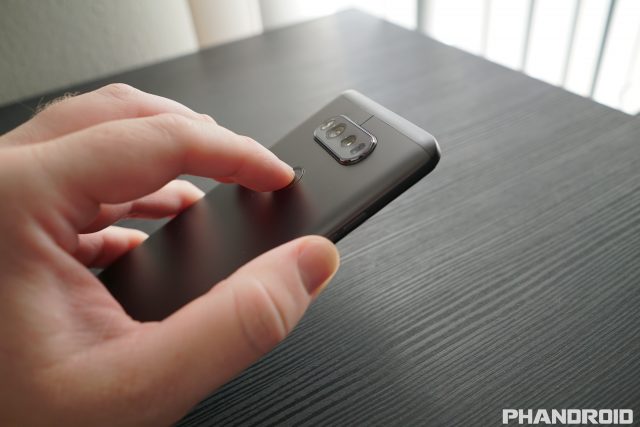
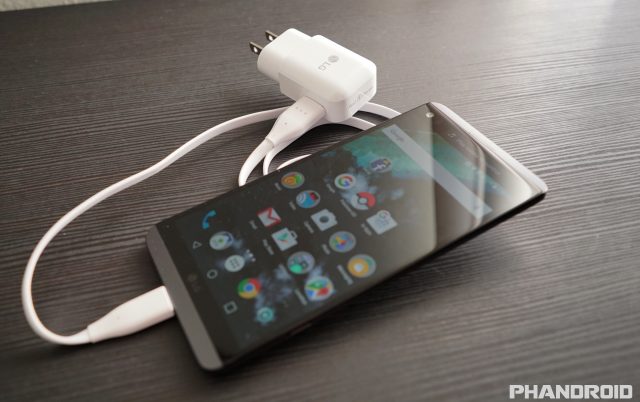
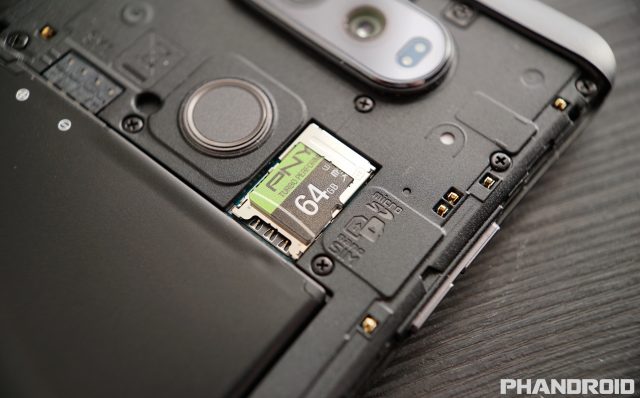

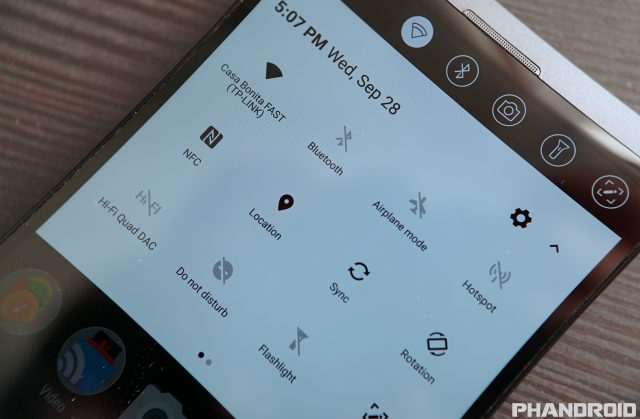

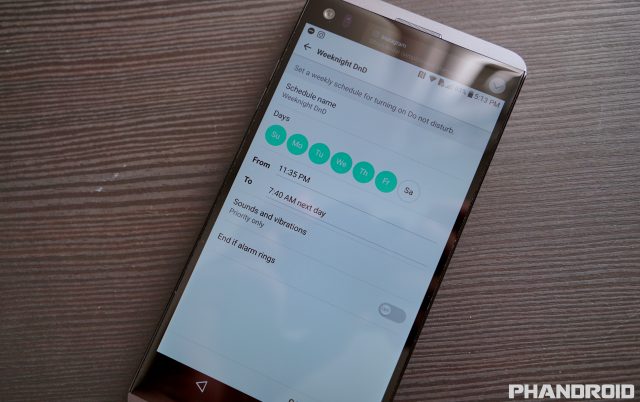
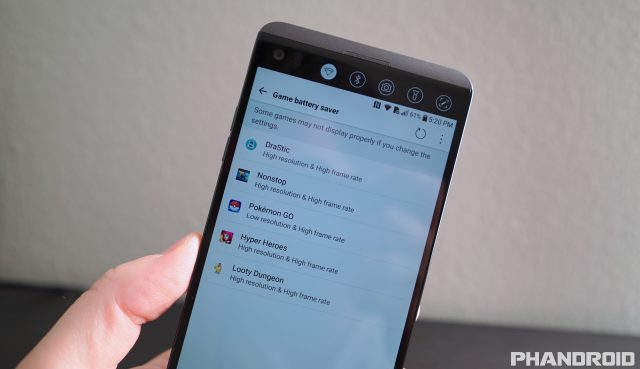
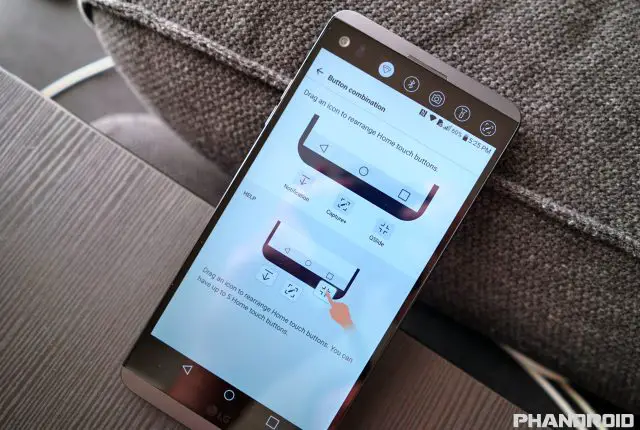

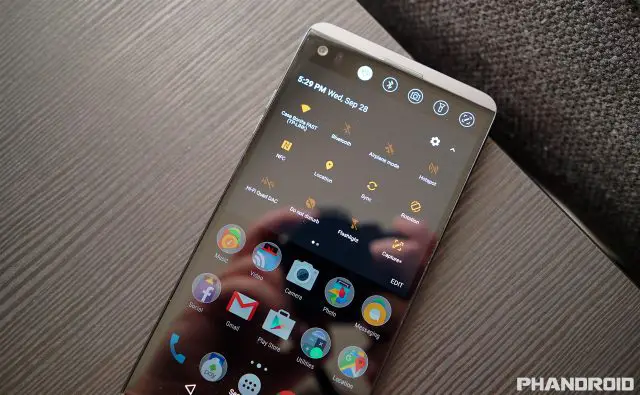
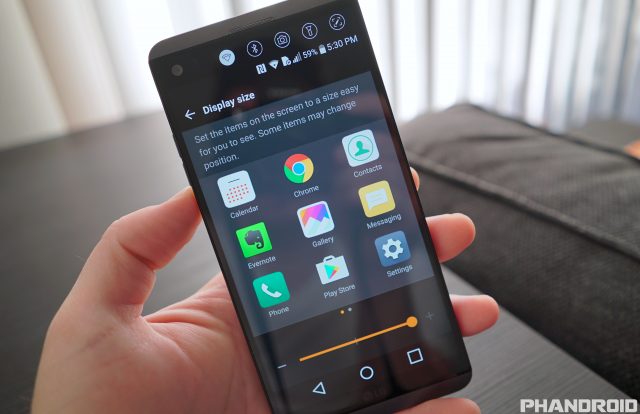
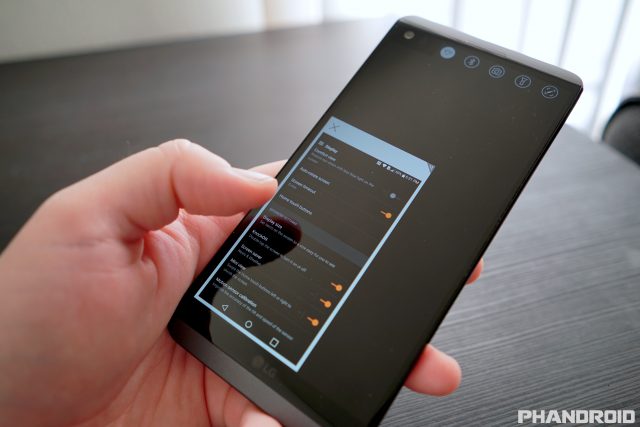
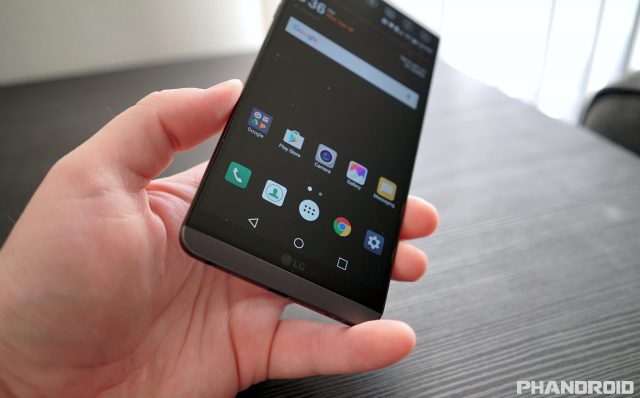
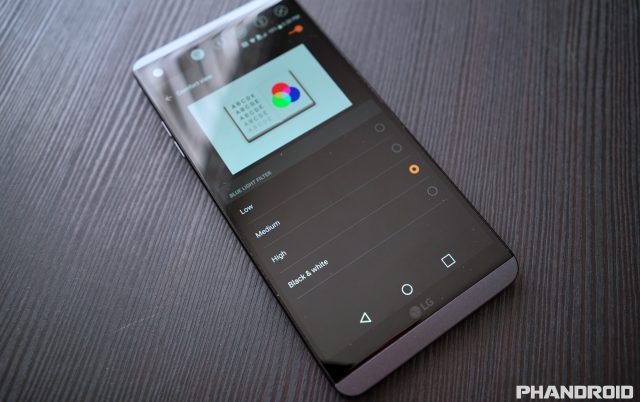
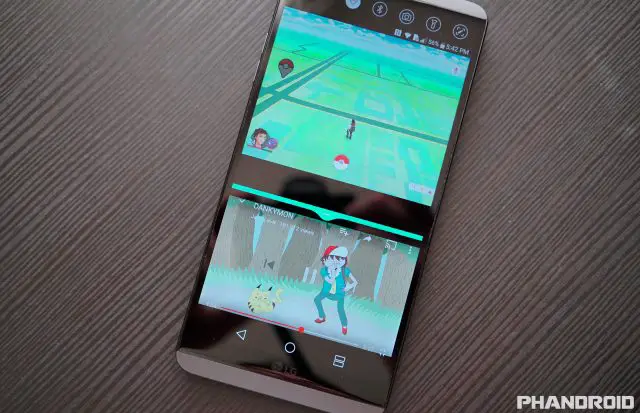
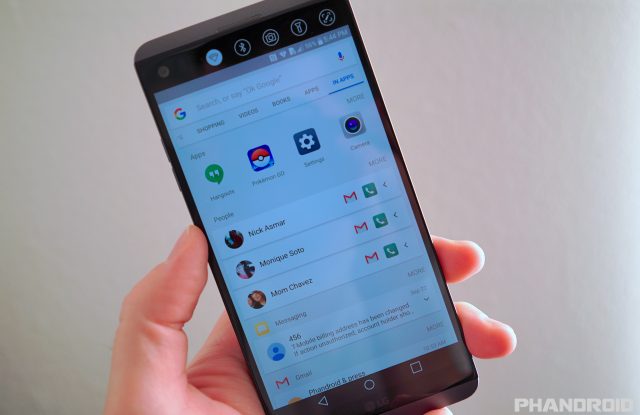
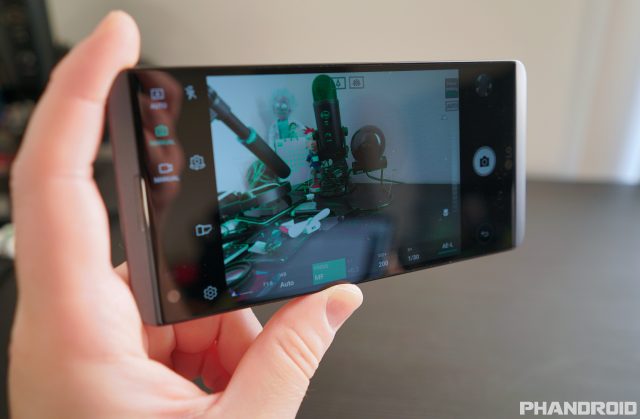
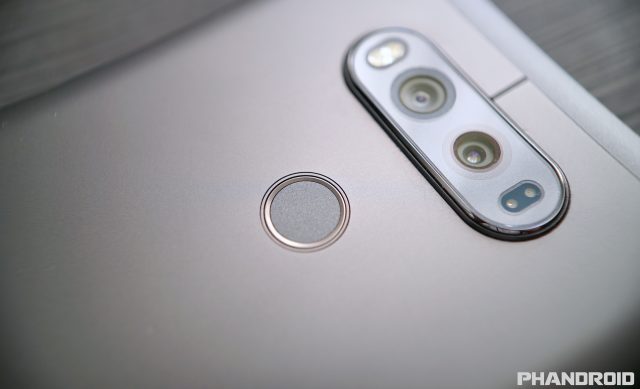
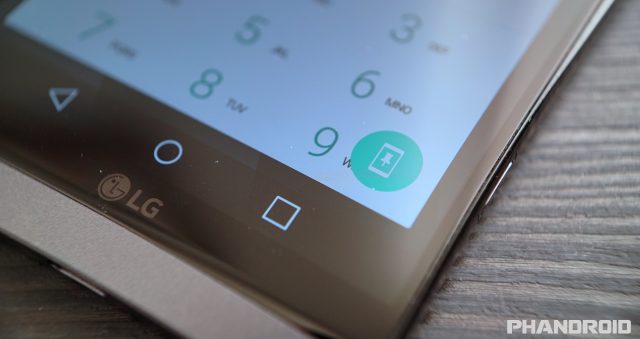

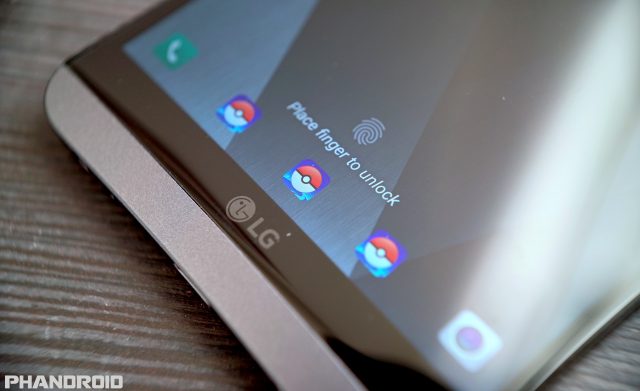
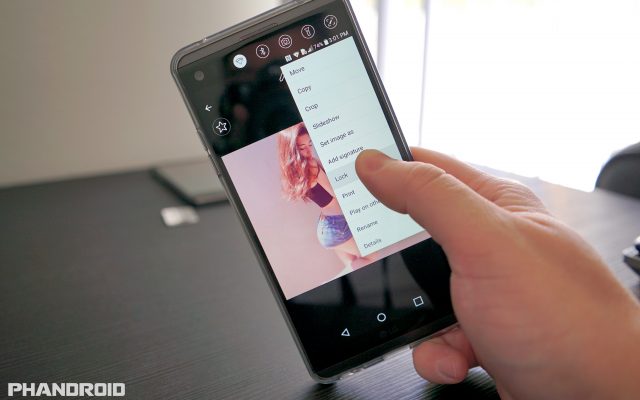
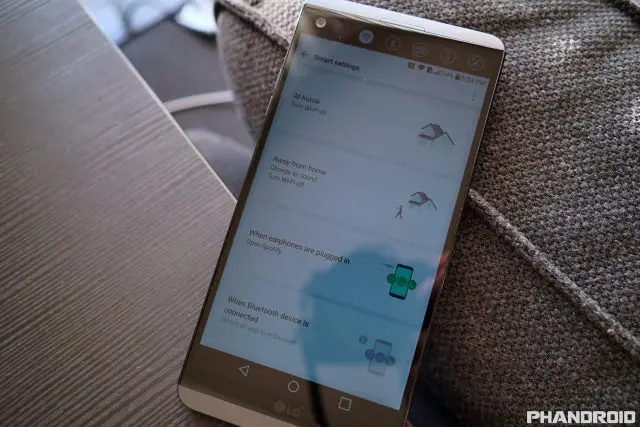
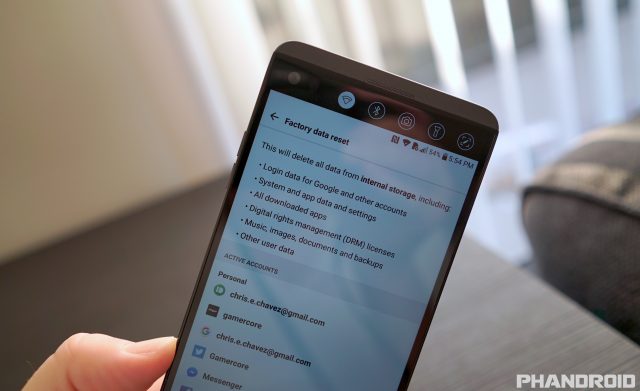
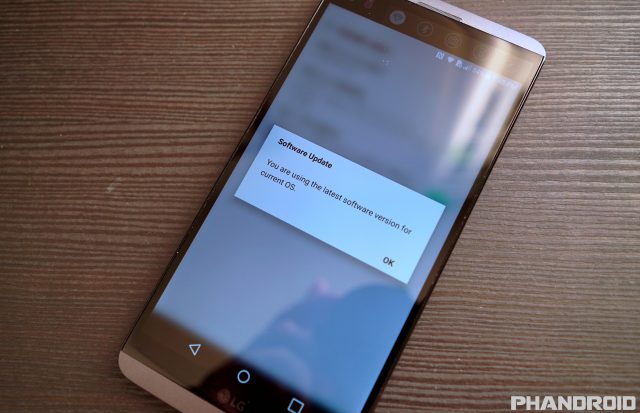

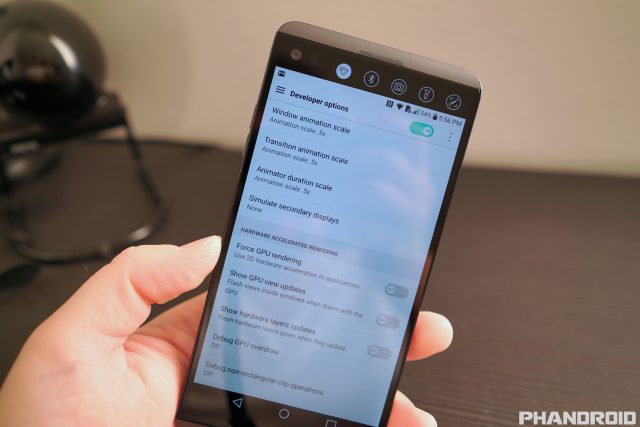


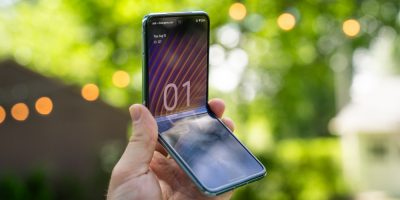

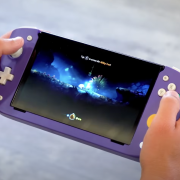

Comments